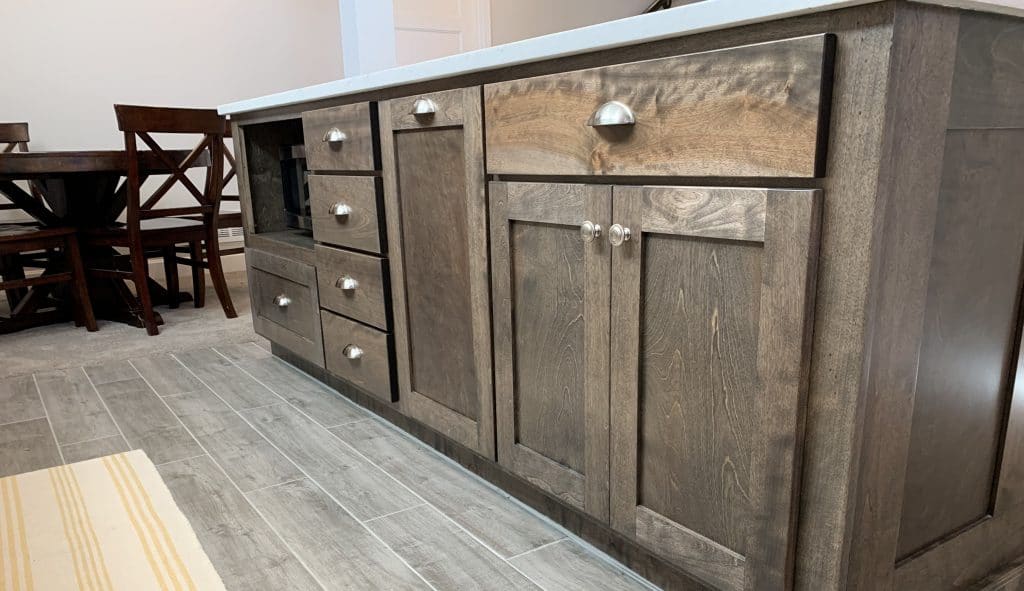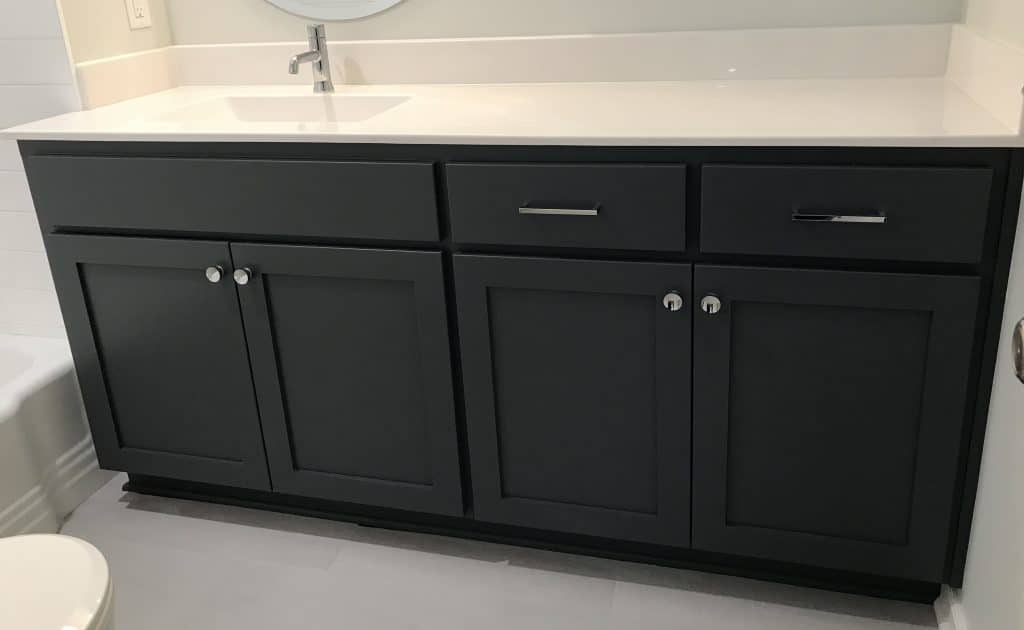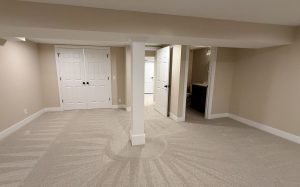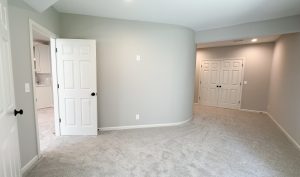When it comes to choosing the finish on your cabinets, there are four main things to consider: cost, looks, complexity, and durability. Unlike tile, where different materials offer large differences in quality, choosing a cabinet finish is more about personal preference and looks. It’s one of the main things in your kitchen that determines whether the space has a rustic, modern, or traditional feel.
Cost
Let’s get this out of the way first because it’s the least important factor. The cost difference between painting and staining is minimal. Staining supplies will cost around $100-$150 dollars for an average-sized kitchen, whereas paint will run $200-$250. Compared to the price of the cabinets themselves, it’s not something that’s going to break your budget regardless of decision.
Looks
The stained vs. painted cabinets debate, beyond taste, really comes down to whether you want the finish to last or if you want it to look natural. White painted cabinets, for example, which can work as both a farmhouse look and a modern look, will simply retain that brightness for a long time.
Paint can also be used for bolder color schemes, such as turquoise or red. So if you want to make a bold statement and have your kitchen stand apart from your neighbors’ this may be the way to go. A bonus to this strategy is that painted cabinets can match the hue of your walls and molding.
But if you don’t want to make a bold statement, consider staining not painting. It’s a classic look that gives kitchens a more warm, organic feel. While there may not be as many stain options as paint color options, there are still plenty of stains to get that exact look you’re going for.
While light stains are available, dark stains are less likely to look out of date. Regardless of trends, dark-stained cabinets retain a look of quality and sophistication. In other words, dark stains are perfect for those who fear buyer’s remorse. The only downside is that dark-stained cabinets show dust more prominently.
Beyond aesthetic, one major difference between the two is how it exposes flaws. In temperate climates with all four seasons, cabinets expand and contract as the weather cools and heats up. Painted cabinets are more likely to show small cracks as the seasons come and go. These means more touch-up jobs and more opportunities to create inconsistencies in the finish.
Stains are better at covering these cracks, but the tradeoff is more exposed grain. If you have cheap wooden cabinets with an unattractive grain pattern, it’s going to show. Staining is recommended most for high quality cabinets.
Complexity
Staining has the clear advantage here. Besides durability, initial application is easier. Painting requires priming and at least two coats. Also, special attention must be paid if you want a high gloss look. What seems easy at first may require a lot more work than you think. If you’re hiring someone to the job for you. The labor costs will be higher with paint.
With staining, you simply need to apply thoroughly over properly sanded wood. Slight inconsistency may add character, and you won’t find yourself on a step ladder with touchup paint six months later.
Durability
We’ve already gone over the cracking issue, but there are other factors that play durability. In general, you can expect painted cabinets to last about 10 years. Stained cabinets can last a full generation of 20-30 years. While upper kitchen cabinets are unlikely to see spills, lower kitchen cabinets can be vulnerable to spills and water damage. You can’t wash painted cabinets, but they’re less prone to water damage. You can wash stained cabinets, but water damage can ruin the finish.





